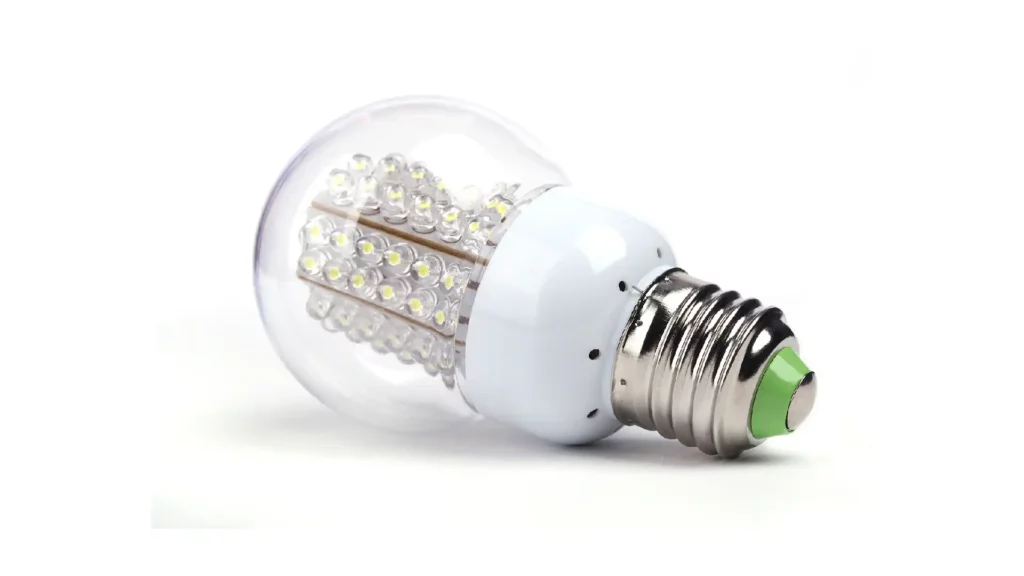In the realm of lighting technology, the efficiency of an LED light bulb stands out as a beacon of innovation and sustainability.
This comprehensive guide delves into the nuances of LED light bulbs, exploring why their efficiency is not just a buzzword but a significant leap toward energy conservation and cost savings.
As we navigate through the intricacies of LED technology, we'll uncover the reasons behind the widespread adoption of these bulbs and how they compare with traditional lighting solutions.
What is LED Light Bulb Efficiency
The efficiency of an LED light bulb is a measure of how well it converts electrical energy into visible light, compared to different types of lighting.
This efficiency has profound implications for both the environment and our wallets. But what makes LED light bulbs so efficient?
Let’s dive into the science and practical benefits of LED lighting to understand its superiority in the lighting market.
The Science Behind LED Efficiency
LED stands for Light Emitting Diode. Unlike incandescent bulbs that produce light by heating a filament, or fluorescent lights that rely on gas and a chemical reaction, the efficiency of an LED light bulb comes from its ability to generate light through the movement of electrons in a semiconductor material.
This process results in minimal heat production and more efficient lights led generation, making LEDs a cooler and more energy-efficient option.
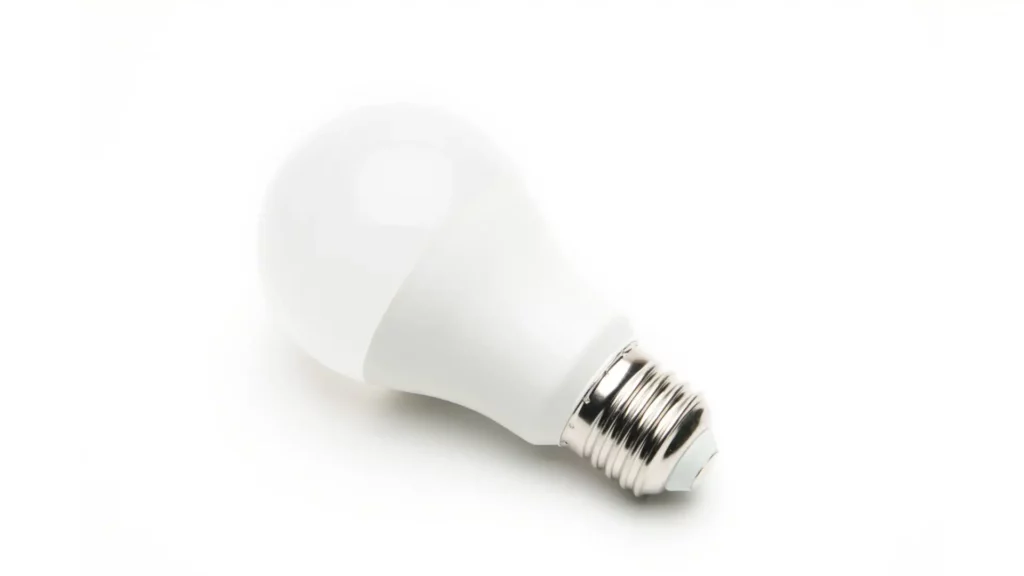
The Benefits of LED Light Bulb Efficiency
The efficiency of an LED light bulb translates into several tangible benefits:
- Energy Savings: The primary advantage of LED light bulbs is their energy efficiency. By using LEDs, households and businesses can significantly reduce the amount of electricity used for lighting, leading to substantial savings on energy bills.
- Longevity: The efficiency of an LED light bulb also contributes to its long lifespan. LEDs can last up to 25 times longer than incandescent bulbs and about 2-5 times longer than fluorescent lights bulbs.
- Reduced Carbon Footprint: By consuming less power, LED light bulbs also contribute to a reduction in carbon dioxide emissions. This efficiency makes LEDs an eco-friendly choice for lighting.
- Versatility and Quality: The efficiency of an LED light bulb does not come at the expense of light quality. LEDs offer excellent color rendering, instant-on capabilities, and the ability to operate efficiently in cold temperatures.
- Enhanced Durability: LEDs are more robust than traditional bulbs, resistant to vibrations, impacts, and frequent switching, making them suitable for a wide range of environments.
- Minimal UV Emissions: LEDs emit minimal ultraviolet light, protecting sensitive objects from degradation, ideal for museums and stores.
- Low Heat Output: LEDs produce little heat, reducing the risk of heat-related damage and contributing to a comfortable environment.
- Improved Safety: Low heat generation and durable construction reduce fire risks and burn hazards, enhancing safety in homes and commercial settings.
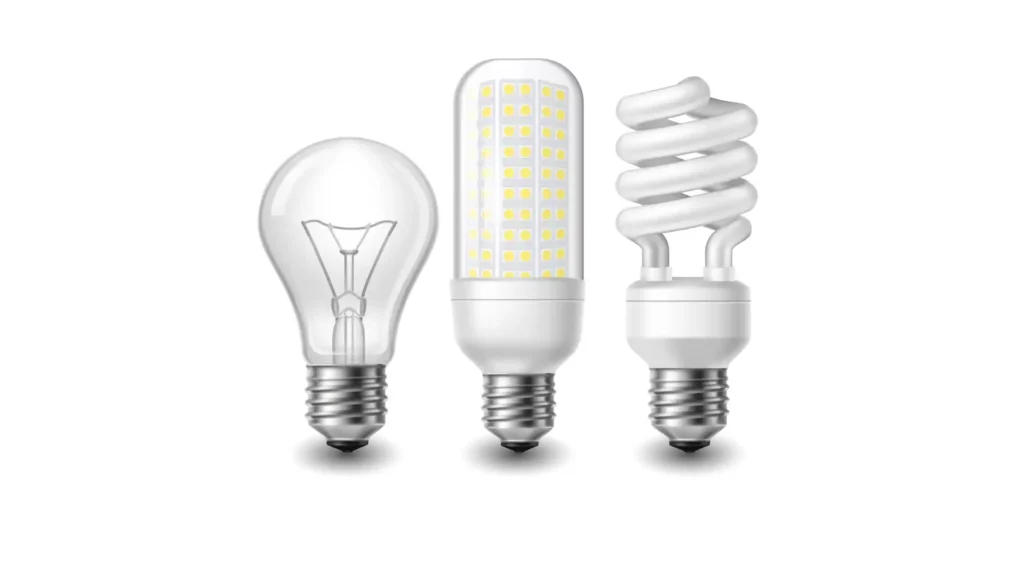
Comparing LED Light Bulbs with Traditional Lighting
When examining the efficiency of an LED light bulb in contrast with traditional lighting solutions, several key differences highlight why LEDs have become the preferred choice for both residential and commercial applications.
Energy Efficiency
- LED Light Bulbs: Highly energy-efficient, converting approximately 80-90% of their energy into light. This efficiency of an LED light bulb results in substantial energy savings over time.
- Incandescent Bulbs: Only about 10-20% of the electrical energy is converted into visible light, while the rest is lost as heat, making them much less efficient.
- Fluorescent Lights: Better than incandescent bulbs, converting about 40-60% of energy into light, but still less efficient compared to LED bulbs.
Lifespan
- LED Light Bulbs: Have a remarkably long lifespan, often lasting up to 25,000 to 50,000 hours before needing replacement.
- Incandescent Bulbs: Offer a significantly shorter lifespan of around 1,000 hours, requiring more frequent replacements.
- Fluorescent Lights: Fall in between, with lifespans ranging from 8,000 to 15,000 hours, better than incandescent but not as durable as LEDs.
Cost-effectiveness
- LED Light Bulbs: Initially more expensive, but their long lifespan and energy efficiency lead to lower long-term costs.
- Incandescent Bulbs: Less expensive upfront but more costly over time due to higher energy consumption and frequent replacements.
- Fluorescent Lights: Offer a middle ground in terms of initial cost and efficiency but still lead to higher lifetime costs compared to LEDs.
Environmental Impact
- LED Light Bulbs: Produce less waste and have a smaller carbon footprint due to their efficiency and long life. The efficiency of an LED light bulb also means reduced greenhouse gas emissions.
- Incandescent Bulbs: Contribute significantly to carbon emissions because of their poor energy efficiency and short lifespan.
- Fluorescent Lights: Contain mercury, a toxic substance that poses disposal problems and environmental hazards.
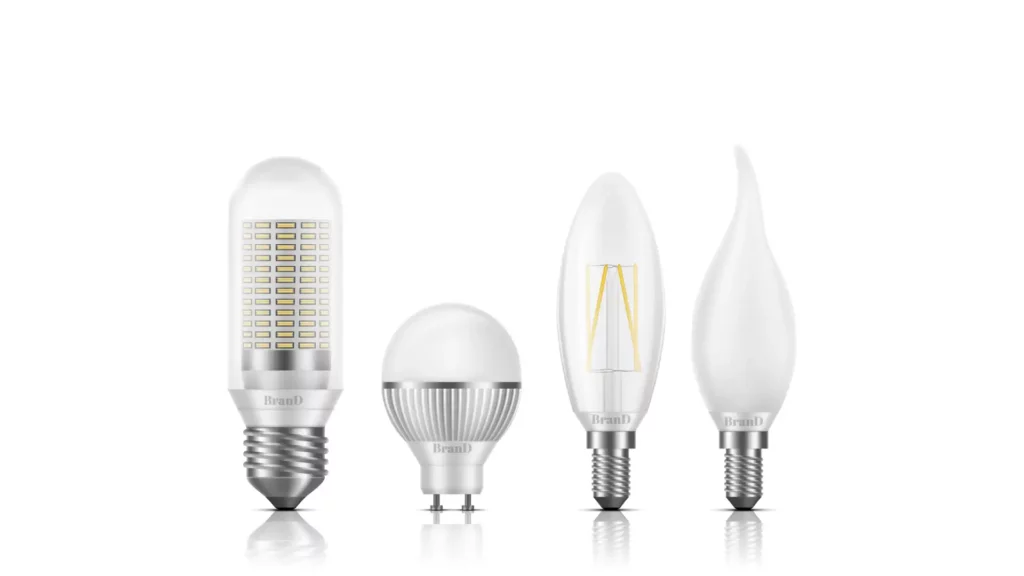
Light Quality and Versatility
- LED Light Bulbs: Offer a wide range of color temperatures, can dim without losing quality, and turn on instantly without flickering.
- Incandescent Bulbs: Provide warm light with excellent color rendering but lack versatility in color temperature and dimming capabilities.
- Fluorescent Lights: Can appear harsh or overly bright, have a limited color spectrum, and may flicker or hum.
Heat Emission
- LED Light Bulbs: Emit very little heat, making them safer to use in various applications and reducing cooling costs in illuminated areas.
- Incandescent Bulbs: Emit a considerable amount of heat, posing a burn risk and increasing air conditioning needs.
- Fluorescent Lights: Emit less heat than incandescent bulbs but more than LEDs, with some risk of heat buildup.
Calculating the Efficiency of an LED Light Bulb
To truly appreciate the efficiency of an LED light bulb, one must understand how to calculate it.
Efficiency is often measured in lumens per watt (lm/W), indicating the amount of light produced for each watt of electricity consumed.
On average, LED light bulbs offer an efficiency of 80-100 lm/W, far surpassing the efficiency of incandescent bulbs (about 16 lm/W) and fluorescent lights (about 70 lm/W).
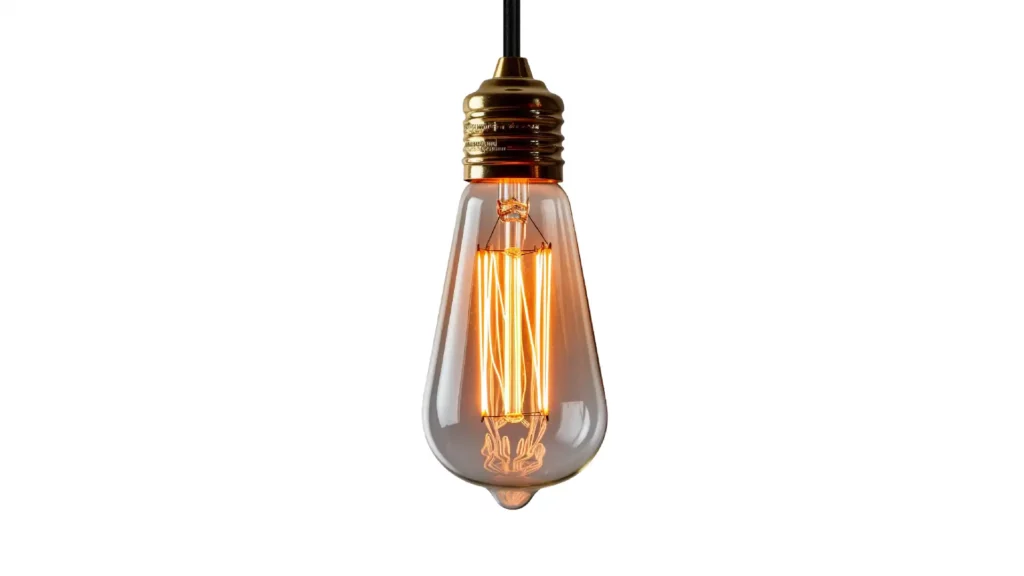
The Future of Efficiency of an LED Light Bulb
The future of LED lighting is promising, with innovations leading to higher efficiency, longer lifespans, and lower costs. This revolution is changing how we use light and promote environmental conservation.
- Breakthroughs in Efficiency
LED light bulbs are already more efficient than traditional lighting, but researchers are developing new materials and structures to increase light output while using less power.
This could result in LED bulbs that are even more energy-efficient while maintaining or improving brightness.
- Pioneering Longer Lifespans
LED lighting offers long lifespan, with future innovations promising even longer-lasting bulbs through advancements in materials and cooling tech.
Improved heat dissipation and reduced degradation could result in LEDs lasting for decades, reducing the need for frequent replacements and maximizing environmental and economic benefits.
- Achieving Cost Reductions
LED lighting costs are expected to decrease due to economies of scale, manufacturing improvements, and cheaper materials, making it more accessible to consumers and businesses globally.
- Enhancing Color Quality and Smart Features
The future of LED lighting is in its high-quality light output. Advancements in color rendering allow LEDs to mimic natural light and improve visual comfort.
Integration with smart systems makes LED lights more adaptable and energy-efficient, providing greater control over lighting environments.
- Expanding Applications
LED light bulbs are not just for home and commercial lighting. Their efficiency is set to revolutionize various industries like agriculture and healthcare.
LED technology is expanding to public infrastructure, automotive lighting, and wearable technology, showing its versatility and potential for sustainability and innovation.
- Contributing to a Greener Planet
LED lighting plays a key role in fighting climate change and cutting energy use. Advancements in LED tech will help reduce the carbon footprint of lighting, a major part of global electricity consumption.
Switching to LEDs is essential for both saving money and reaching environmental sustainability targets.
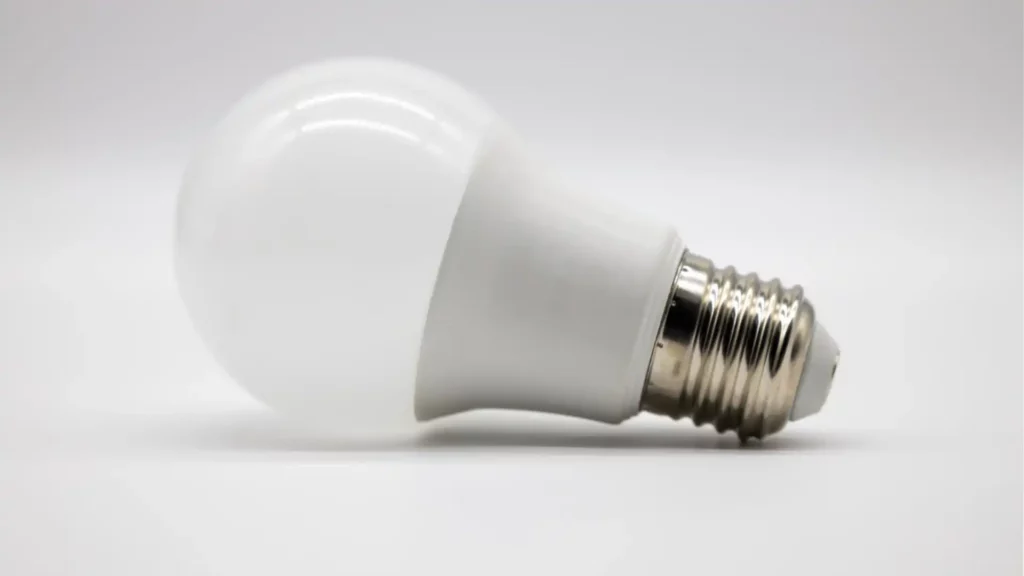
Frequently Asked Questions (FAQs) on the Efficiency of an LED Light Bulb
Q1: How does the efficiency of led lights contribute to energy savings?
A1: The efficiency of led lights translates into significant energy savings because it uses a fraction of the electricity required by incandescent and fluorescent bulbs to produce the same amount of light. This reduction in energy consumption directly lowers utility bills.
Q2: Are LED light bulbs more expensive than traditional bulbs?
A2: Initially, LED light bulbs tend to have a higher purchase price compared to traditional incandescent or fluorescent bulbs. However, the efficiency of an LED light bulb means it uses less energy and lasts much longer, leading to lower energy bills and reduced replacement costs over time. This makes LEDs more economical in the long run.
Q3: Can LED light bulbs be used with existing light fixtures?
A3: Yes, LED light bulbs are designed to fit into standard light fixtures and sockets. Manufacturers have created LED bulbs that mimic the shape and size of traditional bulbs, ensuring they can easily replace older bulbs without the need for special fixtures.
Q4: Do LED light bulbs contain hazardous materials?
A4: Unlike fluorescent bulbs that contain small amounts of mercury, the led light efficiency is achieved without the use of hazardous materials, making them safer for home use and easier to dispose of or recycle.
Q5: How does the efficiency of an LED light bulb affect its lifespan?
A5: The efficiency of an LED light bulb directly contributes to its long lifespan. Because LEDs convert electricity into light more efficiently and produce less heat, they undergo less wear and tear than traditional bulbs. This allows them to last significantly longer, often up to 25 times longer than incandescent bulbs.
Q6: Are LED light bulbs environmentally friendly?
A6: Yes, due to their high efficiency and long lifespan, LED light bulbs are considered more environmentally friendly than traditional lighting options. They consume less energy, which reduces greenhouse gas emissions, and their longevity means fewer bulbs are discarded into landfills.
Q7: Can the light output of an led light efficiency degrade over time?
A7: While the efficiency of an LED light bulb remains relatively stable over its lifespan, the light output may slightly decrease towards the end of its life. However, this degradation happens gradually and is much less pronounced than in incandescent or fluorescent bulbs.
Q8: Do LED light bulbs work in outdoor environments?
A8: Yes, LED light bulbs are well-suited for outdoor use due to their efficiency and durability. They perform well in a wide range of temperatures and conditions. However, it's important to choose LEDs that are specifically rated for outdoor use to ensure optimal performance and lifespan.
Q9: Can the brightness and color temperature of LED light bulbs be adjusted?
A9: Many LED light bulbs offer dimmable features and the ability to adjust color temperature, providing flexibility to create the desired ambiance in any space. Compatibility with dimmer switches and smart home systems varies, so it's advisable to check product specifications for these features.
Q10: How does the efficiency of an LED light bulb compare to that of smart LED bulbs?
A10: Smart LED bulbs offer the same energy efficiency as standard LED bulbs, with the added benefits of being controllable via smartphones, voice assistants, or smart home systems. This allows for even greater energy savings through features like scheduling, remote control, and adjusting brightness or color temperature to optimize energy use.
Efficiency of an LED Light Bulb Conclusion
The efficient lights led is a testament to the progress we've made in lighting technology. With their unparalleled energy efficiency, long lifespan, and high-quality light output, LED bulbs represent a significant step forward in our quest for sustainable and cost-effective lighting solutions.
As we continue to embrace LED technology, we not only benefit from its efficiency but also contribute to a healthier planet.
The efficiency of an LED light bulb is not just a feature; it's a revolution in lighting that promises a brighter, more sustainable future for all.

